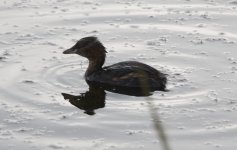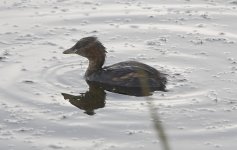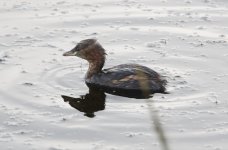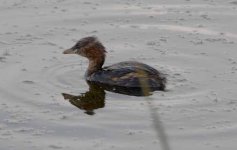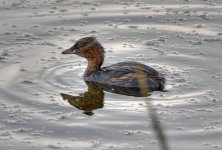Tim Taylor
work in progress
The attached picture of a dabchick on a shiny pond surface caused me some grief yesterday with pictures pretty much unusable. It came reasonably close to the public hide - this represents about 50% of the area of the original after cropping - so the potential should have been there to make something of this situation. Camera settings:
ISO 400, shutter speed 1/500sec, f 5.6, EV +1, evaluative metering mode, 100-400 with 1.4x TC on 30D
With the benefit of hindsight I feel I should have:
1. Had the flash attached and ready (ordered but not here yet!)
2. Consulted the histogram to see if the BG was burning out and continued to increase the EV compensation until it did
3. Considered using the tiny built in flash
What would you guys have done or would you not even have bothered trying to take this shot? Any comments welcome.
Thanks, Tim.
ISO 400, shutter speed 1/500sec, f 5.6, EV +1, evaluative metering mode, 100-400 with 1.4x TC on 30D
With the benefit of hindsight I feel I should have:
1. Had the flash attached and ready (ordered but not here yet!)
2. Consulted the histogram to see if the BG was burning out and continued to increase the EV compensation until it did
3. Considered using the tiny built in flash
What would you guys have done or would you not even have bothered trying to take this shot? Any comments welcome.
Thanks, Tim.




